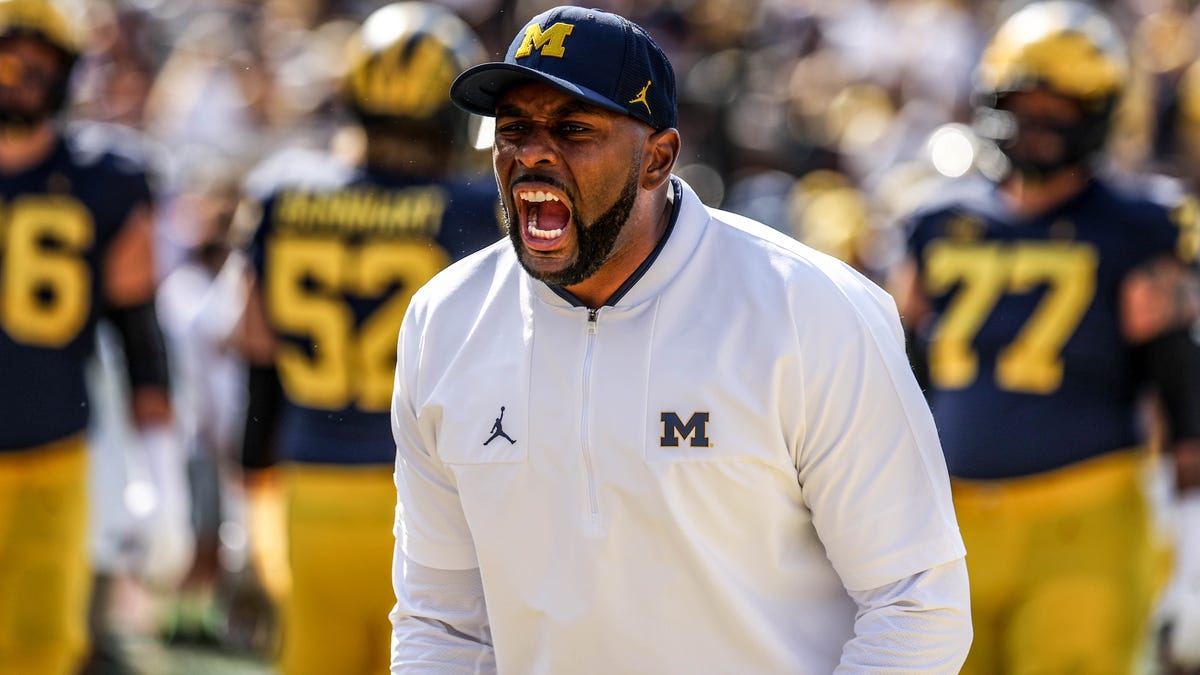Ohio
What is a state of emergency and why did Ohio Governor Mike DeWine declare one in Ohio?

After eight tornadoes hit 11 Ohio counties last week, Governor Mike DeWine has declared a state of emergency. So, what does “state of emergency” mean in Ohio, and what does it do for those areas?
Here’s what to know.
What is a state of emergency in Ohio?
Ohio law gives the governor authority to declare a state of emergency as a way to direct resources to help with urgent needs. The Ohio Constitution also gives the governor authority to call out the state militia (the Ohio National Guard) to act in the event of a disaster.
The governor has broad authority to declare an emergency, according to the Ohio Legislative Service Commission, except for when it violates sections the Constitution, such as the separation of powers.
In the case of the March 14 tornadoes, DeWine’s declaration calls for services, equipment, supplies and personnel to assist in the response and recovery effort from the following agencies:
- Ohio Department of Public Safety
- Ohio Emergency Management Agency
- Ohio State Highway Patrol
- Ohio Department of Transportation
- Ohio Department of Health
- Ohio Department of Mental Health and Addiction Services
- Ohio Department of Natural Resources
- Ohio Department of Administrative Services
Additionally, DeWine activated the Ohio National Guard to help Logan County officials with the cleanup of storm debris on public property.
How long does a state of emergency last?
A state of emergency declaration by the governor is in effect for a maximum of 90 days, per Ohio Revised Code. The state legislature can approve an extension, for up to an additional 60 days.
Lawmakers can continue to extend the state of emergency if needed, according to the legislative commission. The legislature also has the authority to terminate a state of emergency.
What’s the role of the Ohio Emergency Management Agency during an emergency?
The executive director of the Ohio Emergency Management Agency coordinates all emergency management activities of state agencies and acts as the liaison between Ohio and emergency management agencies in other states and the federal government. Ohio is part of the Emergency Management Assistance Compact, a mutual aid agreement that allows states to share resources during governor-declared states of emergency.
What’s the role of the Federal Emergency Management Agency?
An emergency declaration may be necessary to qualify for federal assistance, which becomes available after a state shows its resources are insufficient to address the emergency.
To qualify for aid from the Federal Emergency Management Agency, the governor must first request it, according to FEMA. Then, federal, state and local officials will survey the damage to determine if federal assistance is needed. If FEMA help is needed, the President of the United States will make a declaration.
Ohio weather: What help is available from FEMA for victims of severe storms and tornadoes?
Federal assistance may include temporary housing and home repair grants and low-interest loans from the U.S. Small Business Administration (SBA), according to FEMA.
Renters dealing with uninsured or under-insured losses from the storms can also apply for relief to help replace furniture and primary vehicles. The assistance may also help cover out-of-pocket medical and dental expenses, child care, or moving and storage costs.

Ohio
Judge rules Ohio’s EdChoice school vouchers are illegal, but will ruling stick? | Opinion

Columbus, Bexley, and Worthington schools among plaintiffs suing state
Thomas Suddes is a former legislative reporter with The Plain Dealer in Cleveland and writes from Ohio University. tsuddes@gmail.com.
In a late-June ruling, a Democratic Franklin County Common Pleas judge outlawed spending Ohioans’ tax money to help parents pay private school tuition for the state’s K-12 pupils via the state’s EdChoice school voucher program.
Because Judge Jaiza Page issued her sure-to-be-appealed decision amid the General Assembly’s budget-writing frenzy, some voters may have missed it. And that is, or should be, a problem for Ohioans who like to keep an eye on how the politicians on Capitol Square spend the people’s money. That’s especially so given the sneaky way that voucher fans expanded voucher spending during the 30 years since vouchers first surfaced in the 1995-97 state budget.
For one thing, as inaugurated then, vouchers could only be used by pupils living in the Cleveland school district. And the total amount of tax money the Republican-run legislature agreed to spend on Ohio’s first “school choice” venture in the 1995 budget amounted to about $5.25 million, The Plain Dealer reported. In terms of today’s population, that’s about 44 cents per Ohio resident.
The budget Gov. Mike DeWine just signed allots about $2.44 billion for voucher programs over the next two years — or about $205 per Ohio resident, an incredible increase resulting from stealthy, year-by-year legislative scheming.
Page’s decision was a clear-cut victory for the public school systems supporting the Vouchers Hurt Ohio coalition (lead plaintiff in the lawsuit: the Columbus schools). Among the coalition’s many other members: The Bexley, Upper Arlington and Worthington schools; the Dayton schools; and such Greater Cleveland districts as Brecksville-Broadview Heights, Cleveland Heights-University Heights, Mayfield, Richmond Heights and Shaker Heights schools; DeWine’s Greene County school district, the Cedar Cliff schools; and Republican Ohio House Speaker Matt Huffman’s hometown district, the Lima schools.
How vouchers violate Ohio’s constitution
Reduced to essentials, the judge ruled that Ohio’s school voucher spending violates the state constitution on a number of fronts. That’s the state constitution that Ohio’s 99 state representatives and 33 state senators must swear to uphold before they can take their seats in the General Assembly.
The state will appeal Page’s decision to the Ohio 10th District Court of Appeals, which encompasses Franklin County. If the all-Democratic appellate court upholds the Common Pleas ruling — it likely will — the state would undoubtedly ask the Ohio Supreme Court, with a 6-1 Republican majority, to save the voucher program. And the Supreme Court’s GOP incumbents have shown zero appetite for challenging the similarly Republican-run General Assembly.
Page sided with the voucher foes on three of the arguments they made.
First, the plaintiffs argued that vouchers breached the Ohio Constitution, which requires the General Assembly to create and fund “a thorough and efficient system of common schools throughout the state.” But she found that “the evidence … [showed] that, in expanding the EdChoice program to its current form, the General Assembly has created a system of uncommon private schools by directly providing private schools with over $700 million in funding.”
Page said the plaintiffs had also shown the state had additionally violated Ohio’s constitution to maintain a “thorough and efficient” school system when General Assembly Republicans decided against fully funding what’s known as the Cupp-Patterson Fair School Funding Plan. Result: Ohio public schools received $6.48 billion in state aid instead of $7.24 billion for fiscal year 2022. She said the difference was close to the amount of state voucher funding that same fiscal year.
Finally, the judge agreed with voucher foes that because the program “provides private religious schools with approximately $1 billion in public school funds [the voucher program] violates … the Ohio Constitution by giving a religion or other sect the exclusive right to, or control of, a part of the school funds of Ohio.”
Voucher partially to blame for rising property taxes
What the judge didn’t say, but fairly might have observed, is that the creation and steady increases in Ohio’s state-tax-subsidies for non-public schools has been Statehouse government by stealth: start small, then, budget-by-budget, year by year, divert more and more public school money for the benefit of private schools. The resulting financial squeeze on public school districts is a big reason why skyrocketing property taxes are hammering Ohio homeowners — property tax burdens the General Assembly is making heavier by steadily diverting public school money to private schools.
Thomas Suddes is a former legislative reporter with The Plain Dealer in Cleveland and writes from Ohio University. tsuddes@gmail.com.
Ohio
Ohio State misses out on another 4-star edge rusher target

Ohio State has struck out on another key edge-rushing target with the news that 4-star 2026 defensive end KJ Ford has verbally committed to the Florida Gators over the Buckeyes. It’s unfortunately news that continues the trend of Ohio State not being able to land several of its priority edge rushers in the 2026 class, and a bit of a continuation over the last couple of years.
Out of Duncanville, Texas, Ford is ranked as the No. 15 edge rusher and 116th overall prospect in the 2026 class according to the 247Sports composite rankings. Ford chose the Gators over OSU and Texas A&M.
So far in the 2026 recruiting cycle, Larry Johnson and Ohio State have missed out on other priority defensive end targets Luke Wafle (USC), Carter Meadows (Michigan) and Landon Barnes (Ole Miss). They do have one high-profile edge rusher with the commitment of Khary Wilder, but the number of targets available that Ohio State would love to land on the edge is dwindling fast.
The Ohio State football 2026 recruiting class still sits with 21 commitments in the class, one that is currently inside the top ten. As any more significant news on the recruiting side of things becomes available, we’ll bring it to you.
Contact/Follow us @BuckeyesWire on X (formerly Twitter) and like our page on Facebook to follow ongoing coverage of Ohio State news, notes and opinion. Follow Phil Harrison on X.
Ohio
ESPN dubs Michigan’s Sherrone Moore Ohio State’s biggest rival threat

It comes as no surprise that Ohio State is seen as Michigan football’s archvillain in ESPN’s estimation. After all, for nearly two decades, the Buckeyes were impossible to beat for the Wolverines — no matter how good the team appeared to be. The maize and blue have since righted the ship, rattling off four straight victories over the scarlet and gray, but the hate for all things OSU now permeates Schembechler Hall in a way that it hadn’t previously.
On the flip side, despite crossing out all of the Ms on campus in Columbus and singing songs about how they don’t care for the whole state of Michigan, it was all somewhat rote for Ohio State. Michigan wasn’t much of a threat, and beating the Wolverines felt more like a birthright in the state of Ohio. However, things changed in 2021, and thus, the archvillain for the Buckeyes isn’t just Michigan as a whole; it’s Sherrone Moore, ESPN says.
Michigan coach Sherrone Moore has become a problem for the Buckeyes. He might not wear the villain outfit quite as well as predecessor Jim Harbaugh did, but Moore’s rise in coaching — as Wolverines offensive line coach, offensive coordinator and now head coach — has coincided with Ohio State’s longest losing streak (four games) to its archrival since 1991. Moore served as acting head coach during Harbaugh’s Big Ten-imposed suspension in 2023, as Michigan punched its ticket to the Big Ten championship game. He then earned the permanent role and pulled off one of the more stunning upsets in the history of The Game in November in Columbus. The story of Moore’s coaching career at Michigan is really just beginning, but he has already demonstrated his ability to win the biggest games.
It’s a pretty accurate stance. Michigan didn’t start winning in the series until Moore was promoted and given a bigger role with the team. He’s beaten OSU twice in a head coaching role — once when it was completely unexpected. He’s managed to push the right buttons, ranging from the offensive line (the team’s identity in 2021-23) to the head coaching role.
Of course, Ohio State fans will likely screech more about Connor Stalions and sign stealing, while misrepresenting what is actually under investigation by the NCAA, which may mean that facts are also a villain for self-proclaimed Buckeye Nation. But also, given how much OSU fans have talked about the Wolverines in the immediate aftermath of winning a national championship, don’t let them make you think they don’t have an overall insecurity about Michigan.
-

 Politics1 week ago
Politics1 week agoVideo: Trump Signs the ‘One Big Beautiful Bill’ Into Law
-

 World1 week ago
World1 week agoRussia-Ukraine war: List of key events, day 1,227
-

 Education1 week ago
Education1 week agoOpinion | The Ugliness of the ‘Big, Beautiful’ Bill, in Charts
-

 News3 days ago
News3 days agoVideo: Trump Compliments President of Liberia on His ‘Beautiful English’
-

 News1 week ago
News1 week agoDeath toll from Texas floods rises to 24 as search underway for more than 20 girls unaccounted for | CNN
-

 News6 days ago
News6 days agoTexas Flooding Map: See How the Floodwaters Rose Along the Guadalupe River
-
Business6 days ago
Companies keep slashing jobs. How worried should workers be about AI replacing them?
-

 Technology1 week ago
Technology1 week agoCyberpunk Edgerunners 2 will be even sadder and bloodier




















